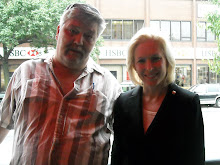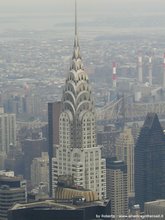As local and national public health officials work overtime to stop the spread of swine flu, they have made sure to highlight common sense measures the public can take to do its part. Almost always, near the top of the list is simply avoiding people you might infect when you are sick: staying home from work and keeping sick children out of school.
But for nearly half of all working New Yorkers, that common sense suggestion may not be an option. A report from the Community Service Society and A Better Balance estimates that 48% of New Yorkers - more than 1.65 million people - have no paid sick days where they work. Low-income New Yorkers suffer the most; fully two-thirds
(66%) cannot take a paid day off when they get sick. Nor can an astounding 72% of Latino low wage workers
For these working families, the next cold or flu means a tough choice between their health (and the health of their co-workers) and the paycheck they need to make ends meet.
Worse, the report suggests that access to paid sick days is on the decline. As recently as 2004, 69% of "near-poor" workers - those just above the poverty line ($22,050 for a family of four) - had paid sick leave where they worked. Today, just 33% of near-poor workers report having paid sick days. It appears that the recession is not only making jobs harder to find; the jobs that do exist are increasingly less likely to provide adequate benefits.
That thousands of working families live in fear that getting sick could be financially ruinous is troubling enough. But the consequences of lacking paid sick days may extend far beyond individual workers and their families
New York City has sensibly made it a policy to close public schools only as a last resort in the event of a swine flu outbreak. But key to the success of the city's swine flu plan is the ability of parents to follow the city's own advice by keeping flu-stricken children at home where they cannot infect their classmates and teachers.
For many working parents, that plan may sound doomed to fail. According to the report, 54% of public school parents (and 65% of low-income public school parents) lack paid sick days where they work. Unsurprisingly, 30% of low-income parents report having sent a sick child to school.
There is also evidence that the lack of paid sick days may even be contributing to our broken health care system, where preventable illnesses go untreated and the under-served choke our emergency rooms and hospitals.
Twenty-two percent of low-income workers who have health insurance report visiting an emergency room simply because they could not take time off work for a doctor's appointment.
The statistics are depressing, but the city can and should take action. The Paid Sick Time bill currently under consideration by the City Council would allow all working New Yorkers to earn paid sick leave on the job. With 39 Council co-sponsors, the bipartisan bill is a common sense way to help working families and protect the public health. (Actually, as a major priority of the progressive Working Families Party, it's a tri-partisan bill.)
New York would not be the first city to implement a universal paid sick days law. San Francisco and Washington have made paid sick leave a basic workplace standard, and more than 15 states are considering similar measures
It is an idea that unites New Yorkers from all walks of life - from single parents to labor leaders and business groups, liberals and conservatives, advocates for women and advocates for family values. It is time to put paid sick days at the top of the agenda
Councilman Eric Ulrich (R-Howard Beach) is a sponsor of the Paid Sick Time Act.

















